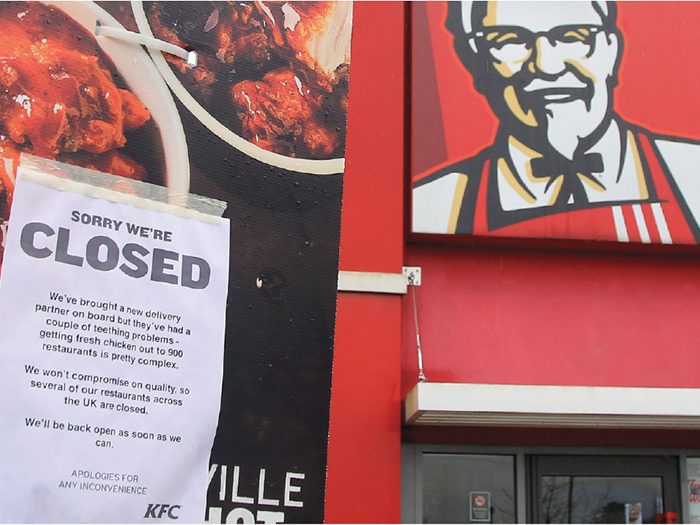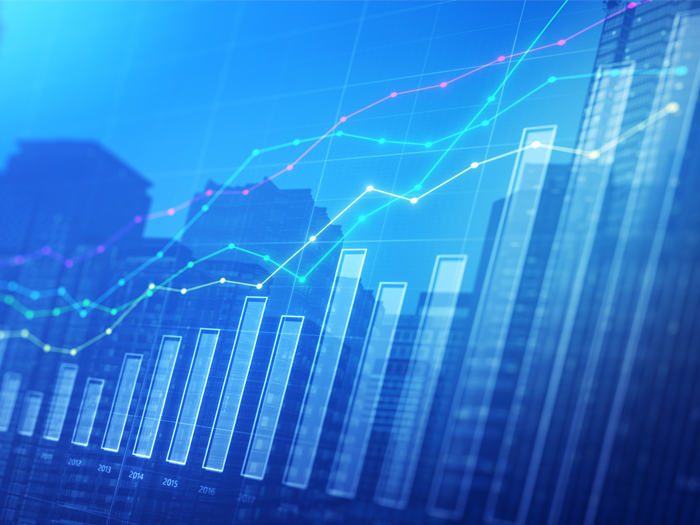Supply Chain
Analytics in Supply Chain Risk Management

It was Colonel Sanders’ worst nightmare. In February, more than half of KFC’s 900 stores in the UK temporarily closed after the fast food chain ran out of chicken. The shortage came days after the company switched its delivery contract to DHL, which blamed “operational issues.”
The episode proved that even in today’s tech-driven business environment supply chains remain vulnerable to disruption. Tech firm Resilinic reported that U.S. corporates were hit hard in 2017, with supply chain incidents nearly doubling from the previous year to impact nearly one in three S&P 500 companies.
Natural disasters, such as the hurricane trio Harvey, Irma and Maria, wrought heavy damage. Around 10 percent of drugs prescribed in the U.S. and produced in Puerto Rico were in short supply after Maria.
Supply chains were also disrupted by factory fires and explosions, as well as corporate M&As, business sales, spin-offs and plant shutdowns.
However, last year’s losses didn’t rank with the two ‘watershed moments’ of the past decade for supply chain management, suggests Josh Green, CEO and founder of trade data company Panjiva, recently acquired by S&P Global.
“During the first half of 2009, when the global economy was in a tailspin, virtually everyone realized that they had too little visibility into the financial health of their suppliers,” he said.
“As a result, a tremendous amount of effort was put into gathering data and developing methodologies for assessing supplier health. Then the March 2011 tsunami in Japan forced managers to look at the risks associated with geographic concentration of their supply chains. The result was geographic diversification.
“More recent weather-related events have been less impactful and, if anything, have demonstrated how resilient global supply chains have become. This is not to diminish the impact of these events on the impacted communities, but supply chains have bounced back or flexed quite quickly.”
The 2011 tsunami heralded a ‘perfect storm’ for several industries, noted Patrick Daley, head of large property, The Hartford. Auto manufacturers lost production due to the unavailability of spare parts — Toyota, previously the industry’s biggest producer, temporarily fell to third place. Monsoon floods in Thailand disrupted production by the leading manufacturer of hard disk drives, Western Digital Corporation, and impacted the PC market.
By contrast, the Kumamoto quake in April 2016 hit Toyota, Sony and Honda. But this time the companies identified which suppliers were impacted and managed to source from an alternative supplier quickly.
Striking A Balance
Extended supply chains inevitably create more weakness: “For decades, supply chain managers stretched their supply chains around the globe in search of lower costs,” said Green. “In recent years, they have increasingly looked closer to home in search of shorter lead times — and therefore better responsiveness to changes in customer demand.”
Rising wage rates in previously low-cost regions and quality issues with some products produced abroad saw some corporates consider reshoring and switching to local suppliers. This is now being accompanied by the option of ‘nearshoring’ — sourcing from a location nearer home than halfway across the globe.
“There’s a growing acceptance by corporates that what were once-in-a-lifetime events are becoming more frequent and potentially more severe,” said Mike Manzo, a director of Aon’s property risk consulting group.
“More recent weather-related events have been less impactful and, if anything, have demonstrated how resilient global supply chains have become.” — Josh Green, CEO and founder, Panjiva
“At the same time, while technology and automation is helping companies as they push to drive down costs, they’re also helping to create more risk.
“So today a company might be dependent on a handful of suppliers when as recently as only five years ago it would have had, say, as many as 50. That’s great from a cost standpoint but not when disruption occurs.”
Daley noted supply chain challenges present opportunities for insurers to provide solutions, but the industry can’t respond to all potential scenarios.
“With an increasing number of companies focusing on greater supply chain visibility, many are identifying alternative suppliers should their main source be disrupted,” he added.
“However, there is no going back to the time when many kept their warehouses full of inventory.”
Analytics To The Rescue
Fortunately, analytics is an increasingly effective tool in addressing supply chain vulnerabilities. Green highlighted two recent “leaps forward.”
“The first was simply awareness — supply chain managers began to understand they could and should make use of data, just as so many other business functions have,” he said.
“The second was the rise of machine learning as a tool for organizing data. There is a lot of insight to be gleaned from data, but the problem is that supply chain data is, generally speaking, a mess. Machine learning techniques put us in a better position to organize data, so that we have a better shot at finding the useful insights.”
According to tech research group Gartner, eight emerging strategic technology trends are set to determine the future of supply chains. They are:
- Artificial intelligence, to enhance and automate decision making;
- Advanced analytics, enabling companies to proactively take advantage of future opportunities while mitigating adverse events;
- the Internet of Things, integrated by the air and defense industry in end-to-end supply chain processes;
- Intelligent things, such as autonomous mobile robots and vehicles;
- Conversational systems, of which virtual personal assistants and chatbots are best known;
- Robotic process automation, which provides a range of cost reductions and system efficiencies;
- Immersive technologies, such as virtual reality and augmented reality for enhanced employee and customer digital experiences;
- and Blockchain, identified as best suited to highly decentralized supply chain management functions such as smart contracts or traceability and authentication.
The Hackett Group singled out advanced supply chain analytics as crucially important for companies’ operations in the years ahead. Bill DeMartino, North America general manager, riskmethods, a developer of cloud-based risk management software, which partners with Hackett, said both are “keenly aware” of the opportunity advanced analytics presents to enterprise supply chains.
“The term is used to cover many facets of analytics, which is a good thing, as folks tend to confuse analytics with a simple application of analytic algorithms,” said DeMartino.
“Key elements derived by the application of advanced analytics to supply chain include visibility and agility — these are critical elements for supply chain risk.”
Specifically, he noted, for leveraging the ever-growing pool of information available. Suppliers need access to information in a timely manner.
Add to this the ability to leverage past disruption cycles to better predict potential future threats, and tomorrow’s supply chains should prove more resilient to the worst the elements can throw at them. &











